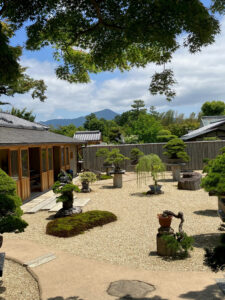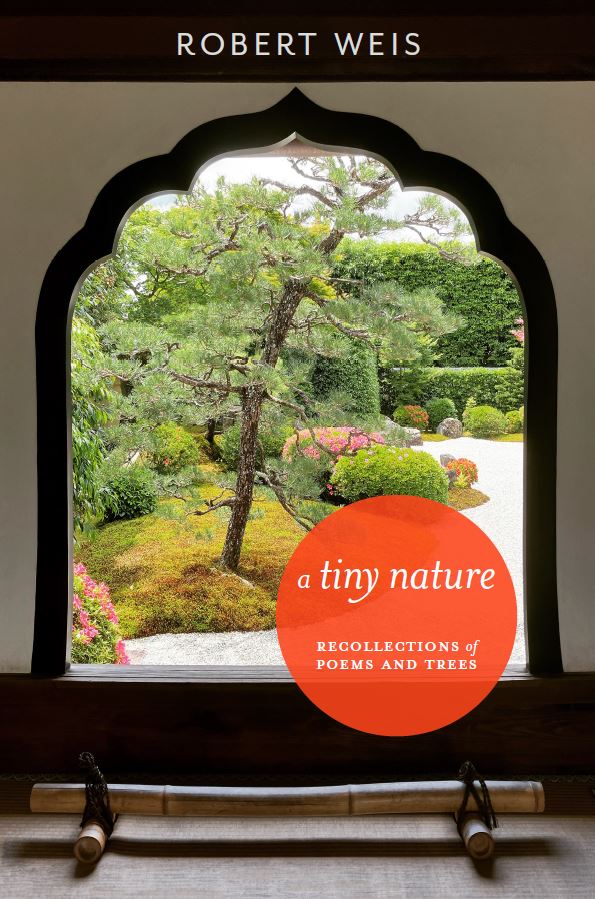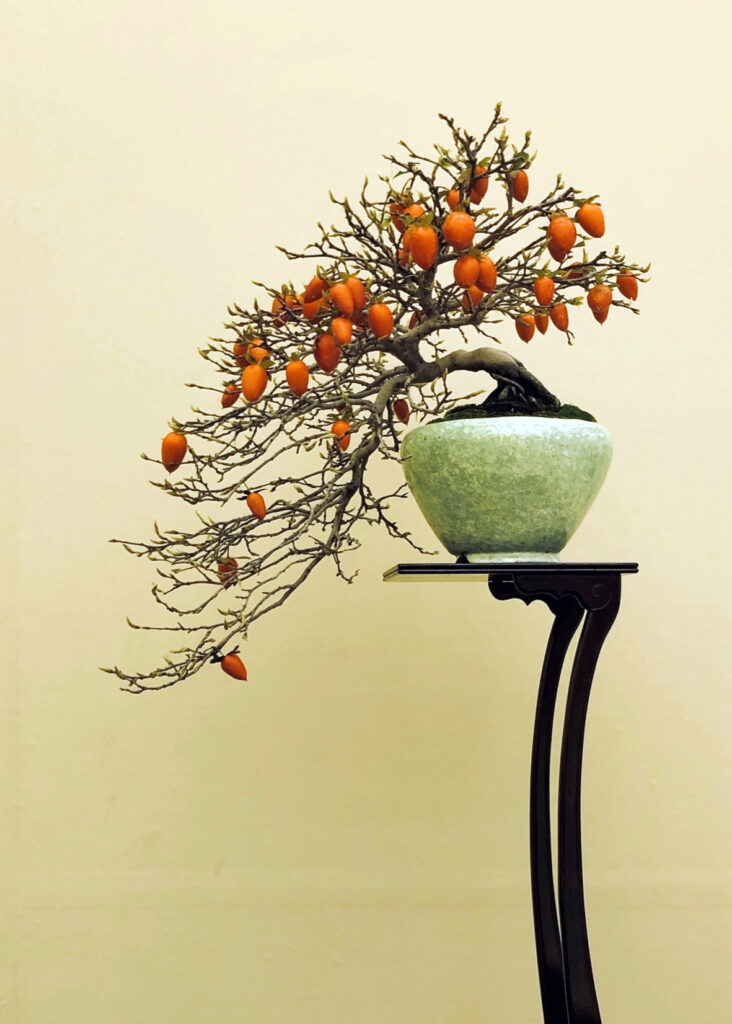The following text is an excerpt from the self-published volume A tiny nature – recollections of poems and trees (August 2023), available exclusively from Amazon. It features a collection of poems, short prose texts and photographs of bonsai trees from Japan and Europe.
********************
I was gazing at the landscape from behind the window of the local train running from Takamatsu to Kinashi and I was thinking about to what extent the nature of this country, Japan, was different from the nature I was familiar with back in Europe. Japan is a land of mountains, accounting for 63 per cent of its surface area: these mountains paraded before my eyes, shrouded in that quintessentially Japanese moisture that brought out the nuances of color in a soft, subdued light, just like in some photographs from the 1970s in my parents’ house. Nostalgia for an unknown life was one of the reasons that made me return to a country so far away and yet so familiar.
Another reason that brought me on this short trip to the island of Shikoku was my attraction to bonsai trees, the small potted plants that materialize a connection with nature which I had felt since childhood. My interest in growing these miniature trees was indeed sparked by a book on bonsai found in my father’s library.
My father had acquired this book in the 1970s, although he never put into practice the cultivation advice it contained. And yet he had planted the seed in his son’s mind: what a marvel it was to look at these images of potted plants that were like the great, venerable trees that grow freely in open spaces. This ‘larger than life’ aspect was deliberately emphasized by the art and expertise of the bonsai Master. Like contemplating a work of art, this feeling of naturalness touched me intuitively at the very core of my being. As I stared at the photos of these trees, I felt myself shrinking in my dreams, until I was able to sit under the knotty, tangled branches.
It was a sensation similar to the one I experienced many years later when I visited Kyoto and the famous Zen garden Ryoan-ji, created in 1473 under the influence of Zen Buddhism; a simple square courtyard, covered in gravel, with a few rocks in the middle. The gravel is raked into regular grooves that surround the rocks like the waves of a sea. Looking at the view, one realizes that it is a representation of a sea, with bizarre rocky islands battered by the waves. And it makes you feel as if you were free as a bird flying over the vast ocean.
The town of Takamatsu, whose name translates literally as “the high pines”, and its surrounding area are famous for growing goyomatsu (white pine) and kuromatsu (black pine) bonsai. The village of Kinashi is home to the greatest number of pine nurseries, about a hundred of them, which have been in business since the Edo period 250 years ago – and now account for 80% of Japan’s pine bonsai production. Pine is a particularly popular tree in Japan, and not only for bonsai cultivation. With an appearance that does not change with the seasons and its resistance to the ravages of the passing years, the Japanese pine is synonymous with virtue and longevity. Traditionally, like all conifers, it has a masculine connotation, as opposed to deciduous trees, which are associated with femininity. The pine is also associated with the Japanese New Year celebration, as a symbol of renewal. It is therefore no coincidence that the Japanese pine is often found in bonsai and in all traditional Japanese gardens.

Takamatsu is home to one of Japan’s most important gardens, the Ritsurinkoen. Here you can admire over 1,400 Japanese pines, some over three hundred years old, trimmed according to very precise rules. These pines have been shaped by gardeners to create evocative forms, such as the famous pine that reminds us of a crane about to fly away on the back of a tortoise. The shape resembles large bonsais, but they are trees planted in the ground, and the aim in this horticultural discipline called niwaki is not to reduce them to a size that can be associated with a pot. As indicated by the name bon for pot and saï for cultivation, a true bonsai is thus by definition a plant cultivated in a pot, whatever its dimensions.
You could say that a bonsai is a nomad tree, not tied to a particular place for its survival. It is perhaps for this reason that bonsai is now enjoying a worldwide popularity that outstrips the waning interest in its country of origin. In any case, the travelling nature of bonsai is a blessing for people like myself who change homes frequently.
But the reason I’ve come to the Ritsurin garden today is to be inspired by these deep-rooted pines, shaped by wind, sun, rain and generations of gardeners who have all contributed to this diversity of forms: sloping trunks, double, triple or even multiple trunks, cascading or semi-cascading trees, wind-beaten branches, trees with exposed roots. The Japanese poet Matsuo Basho said that to learn more about the nature of pine trees, you must go and have a look at pine trees.
The art of bonsai is fundamentally a journey back to the roots, a process that owes much to the observation of nature, whether in the wild or shaped by the hand of man. A Japanese garden is the ideal place for this: a synthesis of nature revisited by gardeners who are artists, craftsmen and spiritual masters all at once.
In the words of Nobel prize-winner Yasunari Kawabata, a great bonsai enthusiast himself, the Japanese garden is a representation of nature, and bonsai is its most accomplished expression. In bonsai, we find the epitome of a Japanese sensibility that brings together aesthetics and spirituality, the outside and the inside world, in a journey that lasts lifelong: this is the essence of the way of bonsai.
*****************
About the author:
Robert Weis works as a natural scientist, and nature is also at the core of his non-fiction and poetry writing. In 2022 he published, together with Davide S. Sapienza, the travelogue Rocklines — a Geopoetic Journey Across Minett Unesco Biosphere (Editions Phi, Luxembourg). He is a contributor to Luxembourgish travel magazine Diariesof, the French Japanophile magazine Ryoko and Japan-based Kyoto Journal as well as Writers in Kyoto anthologies. His first poetry volume, Rêves d’un mangeur de kakis (Michikusa Publishing) came out in January 2023. In summer 2023, the travel narrative Retour à Kyoto (Editions Transboréal) was released. Visit him at www.theroutetokyoto.com.


